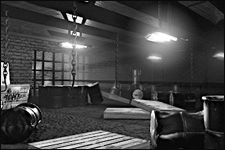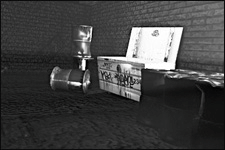Chapter 14. Creating Lights
|
| Light and shadow are essential in creating a three-dimensional, realistic scene. Lighting is a crucial element in setting the mood and feeling of a scene. Too much light can flatten out a scene, leaving the viewer unengaged and uninterested in the imagery. However, the right light intensity and placement can draw the eye around the scene. You can use lights to focus a viewer's attention on a particular place in your scene (Figure 14.1) or on an object you don't want the viewer to miss (Figure 14.2). Light can be used to draw spectators into the scene, as if they were participants, or to leave them feeling like onlookers, outside the action. Figure 14.1. Adding an area of focus strengthens the scene. Figure 14.2. An object can be accented through the correct use of light. For centuries, artists have used chiaroscurothe play of light and darkto invoke emotions and to draw viewers into their paintings. Leonardo da Vinci, Gerrit Van Honthorst, and the master of painting with light, Caravaggio, all experimented with light in their paintings. More recently, we've seen filmmakers use similar techniques in their movies. Blade Runner, The Godfather, and The Blair Witch Project are all great examples: As these movies unfold, their action is supported with lighting through various colors, intensity, and placement. Controlling light, however, can be tricky. In this chapter, we'll look at the attributes and techniques used to control lights in a Maya scene. |
|
- Chapter II Information Search on the Internet: A Causal Model
- Chapter VI Web Site Quality and Usability in E-Commerce
- Chapter IX Extrinsic Plus Intrinsic Human Factors Influencing the Web Usage
- Chapter X Converting Browsers to Buyers: Key Considerations in Designing Business-to-Consumer Web Sites
- Chapter XI User Satisfaction with Web Portals: An Empirical Study

